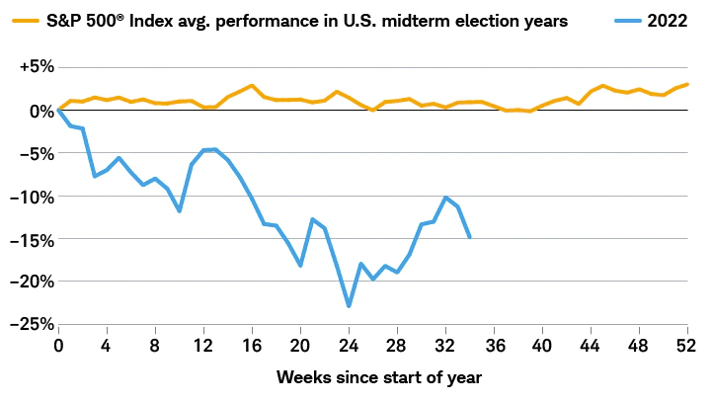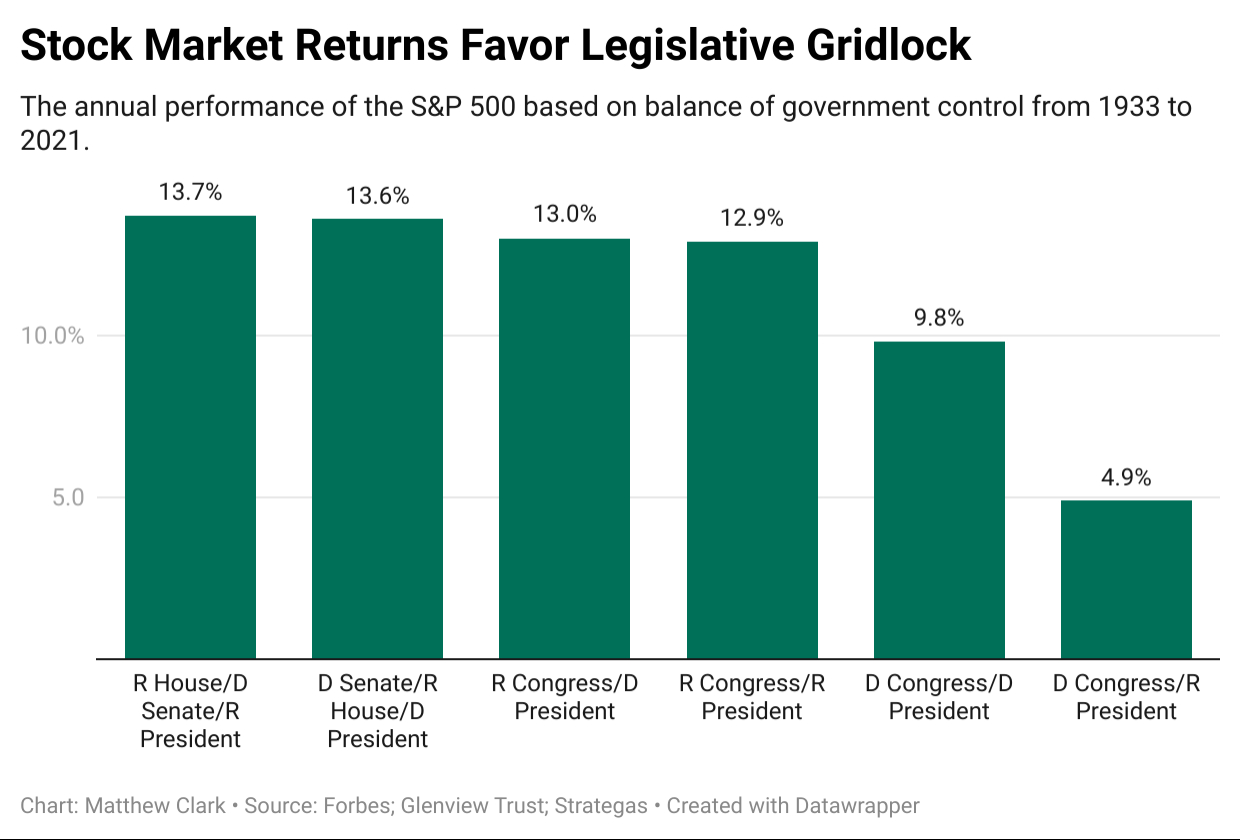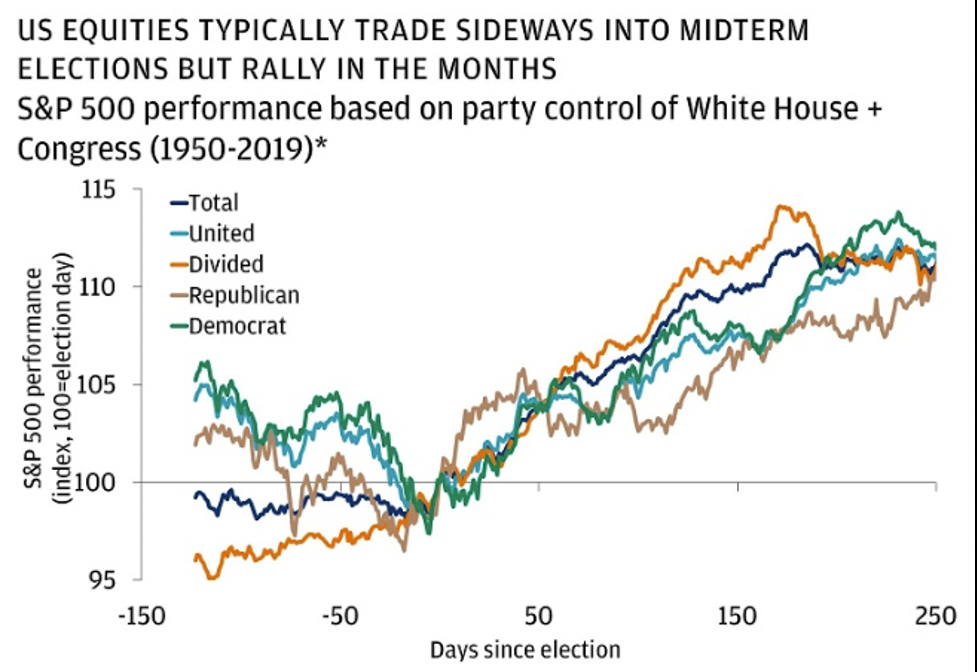S&P 500: Midterm Elections And The Market Change That Follows
2022.11.04 05:06
[ad_1]
As a student of politics, I follow election news with a sharp eye. But as a student of investing, I take a different approach because midterm elections point to potential market changes over the next two years.
Republicans and Democrats are in tight races across the country that will change the makeup of the House and Senate. Right now, Democrats hold Congress. But pundits expect that to change after Tuesday.
If Republicans seize control of the House of Representatives, Senate, or both, the gridlock that will follow isn’t great news for legislation — but it is for investors. Previous market trends surrounding midterm elections can gauge how the market will look. Let’s see how.
A Market Unlike Before
Stock market behavior in 2022 differs from what we have seen during previous midterm elections. This chart from Charles Schwab shows us how:
 S&P 500 Index Average Performance in Midterm Election Years
S&P 500 Index Average Performance in Midterm Election Years
In previous years, the market was up 2% to 3% leading up to and after Election Day. But the is down around 15% since the start of the year. This divergence could mean one of two things:
- History holds, and stocks rip higher following the midterm elections.
- Because stocks have lagged so far, the midterm elections will have little to no impact on stock performance in the near term.
Another factor to examine is stock performance related to the balance of power.
Congress Makeup and Stocks
As I write, FiveThirtyEight gives Democrats a 52% chance of maintaining control of the Senate. Republicans have 81% odds of winning back the House.
No matter your political leanings, this is fantastic news for investors. Historically, the market performs better in congressional gridlock:
 Stock Market Returns Favor Legislative Gridlock
Stock Market Returns Favor Legislative Gridlock
This chart breaks down the market performance based on the control of Congress and the White House. The market has gained an average of 13.7% when Republicans control the House and the presidency.
Under the most probable scenario of this midterm election (Democrats control the Senate and the White House), stocks have jumped 13.6% annually.
Another possible outcome of this year’s midterms would see Republicans control Congress while Democrats hold the White House. In that scenario, stocks have gained 13%.
Markets perform better in gridlock because it forces political parties to compromise. This could curb more unnecessary legislation.
Possible Outcome Spells Rally for Stocks
Because of and recession fears, the market has been in a downward trend in 2022. In times leading up to midterm elections, this isn’t uncommon. Market has been the norm in the months leading up to the midterm elections:
 Equities Typically Rally Following Elections
Equities Typically Rally Following Elections
J.P. Morgan Private Bank’s chart above shows that markets will rally no matter the outcome next Tuesday if history repeats.
Since 1950, the S&P 500 has increased as political uncertainty drops after the election. This includes the high inflation period of 1970 to 1982 amid the oil crisis.
Bottom Line
The 2022 midterm elections are critical. Politics aside, the potential for congressional gridlock — parties sharing power — seems a sure thing.
This doesn’t take into account the future actions of the Federal Reserve or broader inflationary pressures.
Election trends tell us this outcome will provide a shot in the arm for the market. Which is just what investors are looking for.
[ad_2]
Source link








